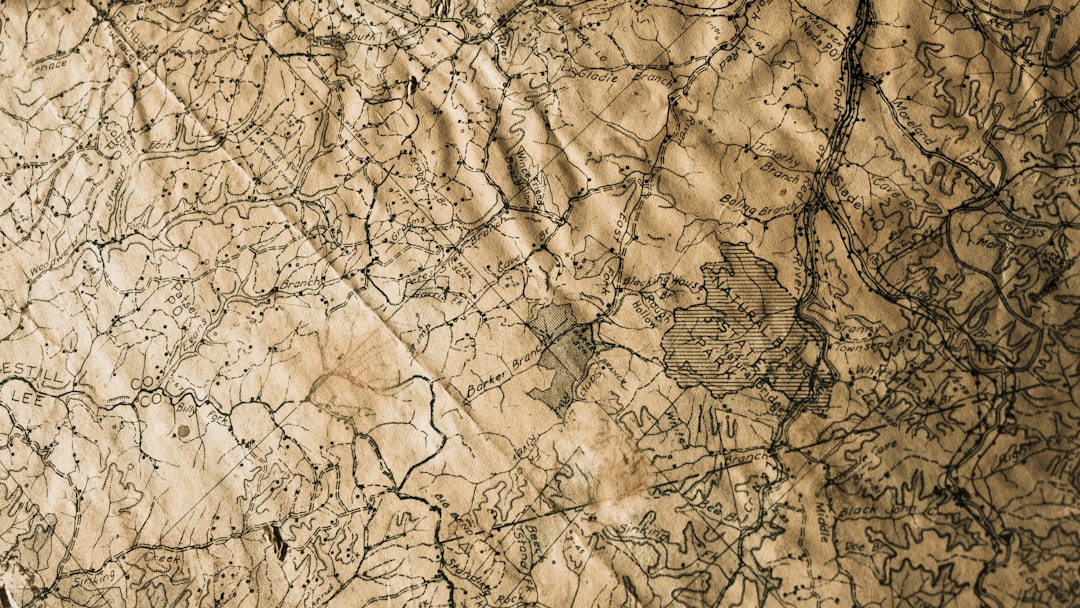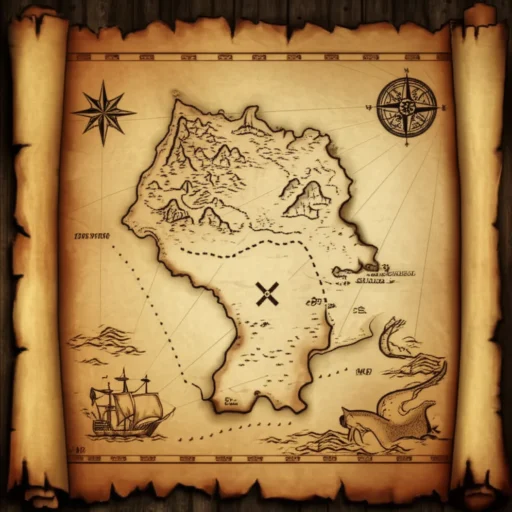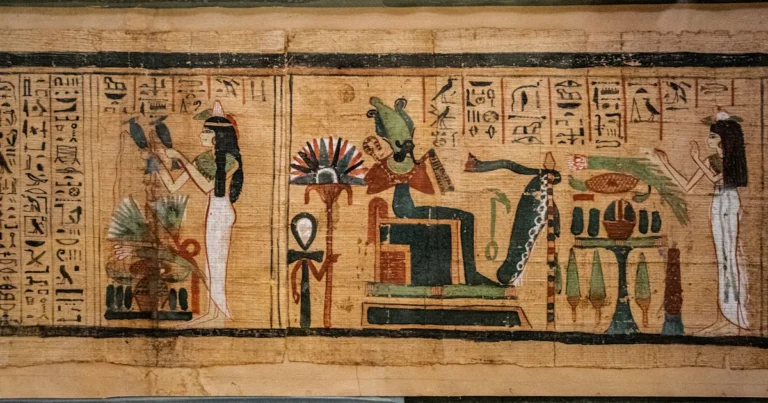Support our educational content for free when you purchase through links on our site. Learn more
Treasure of the Nuestra Señora de Atocha: 7 Secrets Revealed! 💰
Imagine diving into the turquoise waters off the Florida Keys and uncovering a sunken galleon bursting with gold, silver, and emeralds worth hundreds of millions. Sounds like a pirate’s dream, right? Well, this is the true story of the Nuestra Señora de Atocha, a 17th-century Spanish treasure ship that sank in 1622 and lay hidden for over 350 years—until treasure hunter Mel Fisher’s relentless 16-year quest finally cracked the mystery in 1985. But did you know that the Atocha’s story is far more than just treasure? It’s a saga of epic storms, cutting-edge salvage technology, fierce legal battles, and a legacy that still shapes maritime law and treasure lore today.
In this deep dive, we’ll reveal 7 fascinating secrets about the Atocha—from its grand design and the fateful hurricane that sank it, to the dazzling treasure it carried and the modern-day lessons it teaches explorers and historians alike. Ready to uncover the hidden history beneath the waves? Let’s set sail!
Key Takeaways ⚓️
- The Atocha was a heavily armed Spanish galleon carrying vast riches from the New World to Spain when it sank in 1622 during a hurricane near the Florida Keys.
- Mel Fisher’s 16-year search culminated in the 1985 discovery of one of the most valuable shipwrecks ever found, revealing tons of gold, silver, and emeralds.
- Advanced recovery techniques like magnetometers and airlifts revolutionized underwater treasure hunting, setting new standards for marine archaeology.
- Legal battles over ownership led to landmark Supreme Court rulings and influenced maritime salvage laws worldwide, balancing treasure hunting with cultural preservation.
- The Atocha’s legacy lives on in museums, popular culture, and ongoing explorations—with parts of the treasure still undiscovered, keeping the mystery alive.
👉 Shop treasure hunting gear and diving equipment:
- Metal Detectors on Amazon | Underwater Diving Gear on Amazon | Mel Fisher’s Treasures Official Store
Table of Contents
- Quick Tips and Facts ⚓️💰
- The Legendary Voyage: History and Origins of the Nuestra Señora de Atocha 🚢
- Design and Dimensions: Anatomy of a 17th Century Spanish Galleon 🏗️
- The Fateful Storm: How the Atocha Sank in the Florida Keys 🌪️
- The Treasure Trove: What Was Onboard the Nuestra Señora de Atocha? 💎
- 1. The Hunt Begins: Mel Fisher’s Epic Search for the Atocha’s Riches 🔍
- 2. Modern Recovery Techniques: Salvaging Sunken Gold and Silver ⚙️
- 3. Legal Battles and Ownership Disputes: Claiming the Atocha’s Fortune ⚖️
- 4. The Impact on Treasure Hunting Laws and Maritime Salvage Rights 🌍
- 5. The Atocha’s Legacy: Influence on Popular Culture and Treasure Lore 📚🎬
- Preserving History: Museums and Exhibits Featuring the Atocha’s Artifacts 🏛️
- Treasure Hunting Today: Lessons from the Atocha for Modern Explorers 🧭
- Conclusion: Why the Nuestra Señora de Atocha Still Captivates the World 🌟
- Recommended Links for Further Exploration 🔗
- FAQ: Your Burning Questions About the Atocha Answered ❓
- Reference Links: Trusted Sources and Further Reading 📚
Quick Tips and Facts ⚓️💰
- The Nuestra Señora de Atocha was a Spanish treasure galleon that sank in 1622.
- It was carrying a massive treasure hoard of gold, silver, gems, and other valuables.
- The wreck was discovered in 1985 by treasure hunter Mel Fisher after a 16-year search.
- The recovered treasure is estimated to be worth hundreds of millions of dollars.
- The Atocha is considered one of the most valuable shipwrecks ever discovered.
The Legendary Voyage: History and Origins of the Nuestra Señora de Atocha 🚢

The Nuestra Señora de Atocha, a name that echoes through maritime history, was a Spanish galleon that met a tragic end in the treacherous waters of the Florida Keys. This wasn’t just any ship; it was a vessel laden with riches beyond imagination, a symbol of Spain’s colonial ambitions and the allure of New World treasures. To understand the magnitude of the Atocha’s story, we must journey back to the early 17th century, a time when Spain’s maritime power was at its zenith.
The Spanish Treasure Fleets: A Lifeline of Wealth and Power
The Atocha was part of the Spanish treasure fleet, a system of heavily armed ships that transported gold, silver, and other precious commodities from the colonies in the Americas back to Spain. These fleets were the lifeblood of the Spanish Empire, funding its wars, palaces, and insatiable appetite for wealth. The ships themselves were marvels of engineering for their time, massive galleons designed to withstand the rigors of transatlantic voyages and the constant threat of pirates and privateers.
The Atocha Sets Sail: A Journey Fraught with Peril
The Atocha embarked on its fateful voyage in 1622, departing from Havana, Cuba, as part of a 28-ship fleet bound for Spain. The ship was laden with a king’s ransom in treasure, including silver from the mines of Potosí (now in Bolivia), gold from Colombia, emeralds from Muzo, pearls from Venezuela, and countless other valuables. The voyage began like any other, but fate, it seemed, had other plans.
Design and Dimensions: Anatomy of a 17th Century Spanish Galleon 🏗️
The Nuestra Señora de Atocha, like other Spanish galleons of its era, was a formidable vessel, a testament to the shipbuilding prowess of the Spanish Empire. These ships were designed for both war and commerce, capable of carrying vast quantities of cargo while also defending themselves against attacks.
Building for Strength and Capacity: The Galleon’s Sturdy Frame
The Atocha was constructed with a strong oak hull, reinforced with iron straps, and sheathed in lead to protect against wood-boring worms. This robust construction was essential for withstanding the stresses of transoceanic voyages and the occasional encounter with enemy ships or treacherous reefs.
Dimensions that Convey Grandeur: Size and Scale of the Atocha
- Length: Approximately 112 feet
- Beam (width): Approximately 34 feet
- Draft (depth below waterline): Approximately 14 feet
- Tonnage: Rated at 550 tons
Armed to the Teeth: Cannons and Defense Mechanisms
The Atocha was heavily armed, equipped with bronze cannons that could fire heavy iron shot. These cannons were strategically positioned on multiple decks, allowing the ship to engage enemies from various angles. The presence of such firepower highlights the ever-present dangers of 17th-century seafaring, where piracy was rampant, and naval battles were commonplace.
The Fateful Storm: How the Atocha Sank in the Florida Keys 🌪️
The Atocha, despite its robust design and formidable armament, was no match for the fury of a hurricane, a force of nature that has long instilled fear in the hearts of sailors. In September 1622, the Atocha and its fleet encountered one such storm off the coast of the Florida Keys, a chain of islands notorious for their treacherous reefs and unpredictable weather patterns.
Caught in the Hurricane’s Grip: A Desperate Fight for Survival
The hurricane struck with terrifying speed and ferocity, lashing the ships with high winds and torrential rain. The Atocha, heavily laden with treasure and perhaps sailing too close to shore, was driven onto a reef near Dry Tortugas National Park. The impact would have been catastrophic, tearing a hole in the hull and sending the ship quickly to the bottom.
A Tragedy at Sea: Loss of Life and the Atocha’s Submersion
Of the 265 people aboard the Atocha, only five survived: three sailors and two slaves. The rest perished, victims of the unforgiving sea. The ship, along with its precious cargo, sank beneath the waves, settling on the seabed, where it would remain hidden for centuries.
The Aftermath: Spanish Salvage Attempts and the Atocha’s Elusive Location
The loss of the Atocha was a major blow to the Spanish Crown. Desperate to recover their lost treasure, the Spanish launched a massive salvage operation. They managed to locate the wreck of the Santa Margarita, another ship in the fleet that had also sunk in the storm. However, the Atocha’s final resting place remained a mystery, lost to the depths of the ocean.
The Treasure Trove: What Was Onboard the Nuestra Señora de Atocha? 💎
The Nuestra Señora de Atocha wasn’t just carrying gold and silver; it was a floating treasure chest filled with riches from across the Spanish New World. The ship’s manifest, partially recovered from Spanish archives, reads like a pirate’s wish list, detailing a staggering amount of wealth.
A King’s Ransom: Silver, Gold, and Emeralds
- Silver: The Atocha carried tons of silver in various forms, including coins, bars, and ingots. Much of this silver came from the legendary Potosí mines in Bolivia, which produced vast quantities of the precious metal for the Spanish Empire.
- Gold: While not as abundant as silver, the Atocha also carried a significant amount of gold, likely in the form of bars, coins, and artifacts. This gold would have come from various sources, including mines in Colombia and other parts of South America.
- Emeralds: The Muzo emerald mines of Colombia were renowned for producing some of the finest emeralds in the world. The Atocha was carrying a large quantity of these gems, some of which were likely destined for the Spanish royal court.
Beyond the Precious Metals: A Diverse Cargo of Valuables
- Pearls: The warm waters of the Caribbean were teeming with pearl oysters, and the Atocha carried a valuable collection of these iridescent gems, likely gathered from various locations along the Spanish Main.
- Chinese Porcelain: The Spanish had a flourishing trade with Asia, and the Atocha’s cargo included delicate and highly prized Chinese porcelain, a testament to the global reach of 17th-century commerce.
- Indigo and Cochineal: These natural dyes were highly sought after in Europe for their vibrant colors. The Atocha carried a substantial quantity of both, highlighting the importance of these commodities in the transatlantic trade.
1. The Hunt Begins: Mel Fisher’s Epic Search for the Atocha’s Riches 🔍
The story of the Nuestra Señora de Atocha doesn’t end with its sinking. It’s a tale of perseverance, obsession, and the unwavering belief in finding a lost treasure that had captivated imaginations for centuries. Enter Mel Fisher, a former chicken farmer turned treasure hunter, whose name would become synonymous with the Atocha.
A Lifelong Pursuit: Mel Fisher’s Unwavering Determination
Mel Fisher, along with his family and a dedicated crew, embarked on a relentless search for the Atocha in 1969. Fueled by historical records, maritime charts, and a healthy dose of intuition, Fisher scoured the waters off the Florida Keys, facing numerous setbacks, equipment failures, and skepticism from doubters.
Years of Toil and Tragedy: The High Cost of Treasure Hunting
The search for the Atocha was fraught with challenges, both financial and emotional. Fisher poured his life savings into the endeavor, often facing financial ruin. Tragedy struck in 1975 when a salvage boat capsized, claiming the lives of Fisher’s son, Dirk, his daughter-in-law, Angel, and another crew member.
A Glimmer of Hope: Early Discoveries Fuel the Search
Despite the hardships, Fisher and his team persevered. They unearthed tantalizing clues over the years, including silver bars in 1973 and five bronze cannons in 1975, all confirmed to be from the Atocha. These discoveries, while significant, were merely a taste of the riches that lay hidden beneath the waves.
2. Modern Recovery Techniques: Salvaging Sunken Gold and Silver ⚙️
Mel Fisher’s search for the Atocha wasn’t just a story of luck and determination; it was also a testament to the innovative use of technology in underwater exploration and salvage. Fisher and his team employed a combination of historical research, marine salvage expertise, and cutting-edge equipment to locate and recover the ship’s treasures.
Magnetometers and Metal Detectors: Unmasking the Ocean Floor
Magnetometers, which detect variations in the Earth’s magnetic field caused by metal objects, played a crucial role in pinpointing the Atocha’s resting place. These sensitive instruments could detect the presence of iron and other metals buried beneath the seabed, helping to narrow down the search area.
Airlifts and Dredging: Unearthing History from the Depths
Once the general location of the wreck was established, Fisher’s team used powerful airlifts and dredges to carefully remove sand and debris from the seafloor. These techniques, while effective, required precision and care to avoid damaging any delicate artifacts that might be buried alongside the heavier treasure.
Diving and Underwater Archaeology: A Hands-On Approach to History
Divers played a crucial role in the recovery process, carefully excavating the wreck site and documenting their findings. They used specialized underwater metal detectors and hand tools to locate and retrieve artifacts, working meticulously to preserve the historical context of their discoveries.
3. Legal Battles and Ownership Disputes: Claiming the Atocha’s Fortune ⚖️
The discovery of the Atocha’s treasure wasn’t just a cause for celebration; it ignited a legal firestorm that reached the highest court in the land. The State of Florida claimed ownership of the wreck and its contents, citing its historical significance and its location within state waters. Fisher, however, argued that he had salvaged the treasure on the high seas and therefore had legal rights to it.
A Landmark Supreme Court Case: Fisher vs. The State of Florida
The legal battle between Mel Fisher and the State of Florida dragged on for years, becoming a landmark case in maritime law. The case eventually reached the United States Supreme Court, which ruled in favor of Fisher in 1982, upholding the centuries-old law of salvage. This ruling established that salvors who discover and recover shipwrecks in international waters have clear title to their finds.
The Implications for Treasure Hunting: Setting Precedents and Defining Rights
The Supreme Court’s decision in the Atocha case had far-reaching implications for treasure hunting and maritime salvage. It provided legal clarity for salvors operating in international waters, encouraging further exploration and recovery of historically significant shipwrecks. The case also highlighted the importance of meticulous record-keeping, archaeological best practices, and cooperation with relevant authorities in treasure hunting endeavors.
4. The Impact on Treasure Hunting Laws and Maritime Salvage Rights 🌍
The discovery of the Nuestra Señora de Atocha and the subsequent legal battle over its treasure had a profound impact on treasure hunting laws and maritime salvage rights, both in the United States and internationally. The case highlighted the complexities of ownership claims, the importance of historical preservation, and the need for clear legal frameworks governing underwater cultural heritage.
The Abandoned Shipwreck Act of 1987: Protecting Underwater Heritage
In the wake of the Atocha case, the United States Congress passed the Abandoned Shipwreck Act of 1987. This act asserts state ownership of historically significant shipwrecks embedded in submerged lands within three miles of the coastline. The act aims to protect these underwater archaeological sites from treasure hunters solely interested in profit, encouraging responsible exploration and preservation.
International Conventions and Agreements: A Global Perspective on Underwater Heritage
The Atocha case also contributed to the development of international conventions and agreements aimed at protecting underwater cultural heritage. The UNESCO Convention on the Protection of the Underwater Cultural Heritage (2001) provides a comprehensive framework for safeguarding shipwrecks, submerged ruins, and other archaeological sites located in international waters.
5. The Atocha’s Legacy: Influence on Popular Culture and Treasure Lore 📚🎬
The story of the Nuestra Señora de Atocha, with its tales of lost treasure, daring explorers, and legal battles, has captivated the public imagination for decades. The shipwreck has inspired books, documentaries, and countless articles, cementing its place in popular culture and treasure lore.
From Page to Screen: The Atocha in Books and Documentaries
Numerous books have been written about the Atocha, recounting the ship’s history, the search for its treasure, and the impact of its discovery. Mel Fisher himself authored several books, including “The Search for the Atocha” (1979) and “Dreams of Gold and Silver” (1988), providing firsthand accounts of his relentless pursuit. Documentaries such as “National Geographic Explorer: Treasure Ship of the Spanish Main” (1986) and “Mel Fisher’s Lost Fleet” (2008) have brought the story to life for television audiences, showcasing the challenges and triumphs of underwater exploration.
A Cultural Touchstone: The Atocha’s Enduring Appeal
The Atocha’s story continues to resonate with people around the world, embodying the allure of lost treasure, the thrill of discovery, and the enduring power of human ambition. The shipwreck serves as a reminder of the rich history hidden beneath the waves and the importance of preserving our shared maritime heritage.
Preserving History: Museums and Exhibits Featuring the Atocha’s Artifacts 🏛️

The recovery of the Nuestra Señora de Atocha’s treasure wasn’t just about amassing wealth; it was also about preserving history and sharing it with the world. Today, many of the artifacts recovered from the wreck are on display in museums and exhibits, offering a glimpse into the opulence of Spain’s colonial past and the ingenuity of 17th-century craftsmanship.
The Mel Fisher Maritime Museum: A Treasure Trove of History
The Mel Fisher Maritime Museum in Key West, Florida, stands as a testament to the Atocha’s legacy. Founded by Mel Fisher himself, the museum houses an extensive collection of artifacts from the wreck, including gold and silver coins, jewelry, navigational instruments, and everyday objects that provide insights into life aboard a 17th-century Spanish galleon. Visitors can marvel at the craftsmanship of the era, from intricately designed silver plates to gold bars stamped with the seals of Spanish merchants.
Beyond Key West: Sharing the Atocha’s Story with the World
Artifacts from the Atocha have also been featured in exhibitions at other museums around the United States and internationally. These traveling exhibits allow people worldwide to connect with the story of the shipwreck, learn about maritime history, and appreciate the cultural significance of the recovered treasures.
Treasure Hunting Today: Lessons from the Atocha for Modern Explorers 🧭
The story of the Nuestra Señora de Atocha continues to inspire treasure hunters and underwater explorers today, serving as both a cautionary tale and a beacon of hope. While the days of stumbling upon a treasure-laden galleon like the Atocha are largely gone, the lessons learned from Fisher’s epic search remain relevant in the modern era of deep-sea exploration and the ongoing quest to uncover the mysteries of the past.
Technological Advancements: From Magnetometers to Autonomous Underwater Vehicles
Technology has revolutionized the field of underwater exploration since Mel Fisher’s time. Today’s treasure hunters and marine archaeologists have access to advanced sonar systems, remotely operated vehicles (ROVs), and autonomous underwater vehicles (AUVs) that can map the seafloor in high resolution, identify potential shipwreck sites, and even retrieve artifacts with minimal disturbance.
Ethical Considerations: Balancing Treasure Hunting with Historical Preservation
The Atocha case highlighted the ethical considerations inherent in treasure hunting and the importance of balancing the pursuit of profit with the preservation of cultural heritage. Modern treasure hunters are increasingly expected to adhere to ethical guidelines, obtain proper permits, and work with archaeologists and historians to ensure that their activities contribute to our understanding of the past rather than simply plundering it for personal gain.
Conclusion: Why the Nuestra Señora de Atocha Still Captivates the World 🌟

The saga of the Nuestra Señora de Atocha is a dazzling blend of history, adventure, tragedy, and triumph. From its grand construction as a symbol of Spanish imperial might to its catastrophic sinking in a hurricane, and finally to its dramatic rediscovery centuries later, the Atocha embodies the timeless allure of lost treasure and human perseverance.
Mel Fisher’s relentless quest reminds us that beneath the waves lie stories waiting to be told—stories of courage, loss, and discovery. The treasure itself, shimmering with gold, silver, and emeralds, is only part of the tale; the legal battles, technological innovations, and cultural impact make the Atocha a landmark in maritime history.
If you’re fascinated by treasure hunting, maritime archaeology, or the golden age of exploration, the Atocha offers a treasure trove of lessons and inspiration. It teaches us that history isn’t just in books—it’s buried beneath the ocean, waiting for those bold enough to seek it.
So, whether you’re a history buff, a treasure hunter at heart, or simply someone who loves a good story, the Atocha’s legacy is a shining beacon of adventure and discovery. And remember Mel Fisher’s mantra: “Today’s the day!” — because who knows what hidden histories await your own discovery?
Recommended Links for Further Exploration 🔗
- Mel Fisher’s Treasures Official Store: MelFisher.com — Own authentic Atocha coins and artifacts with certificates of authenticity.
- Books on the Atocha and Treasure Hunting:
- Treasure Hunting Gear and Books:
- Metal Detectors: Amazon Search: Metal Detectors
- Underwater Exploration Equipment: Amazon Search: Underwater Diving Gear
- Maritime History and Archaeology Resources:
FAQ: Your Burning Questions About the Atocha Answered ❓

What was the Nuestra Señora de Atocha and why is it famous for treasure hunting?
The Nuestra Señora de Atocha was a Spanish treasure galleon that sank in 1622 during a hurricane near the Florida Keys. It is famous because it was carrying an enormous cargo of gold, silver, emeralds, and other precious goods from the New World to Spain. Its wreck was lost for centuries until Mel Fisher discovered it in 1985, making it one of the most valuable shipwrecks ever found. The story is legendary among treasure hunters and historians alike.
How did the Nuestra Señora de Atocha sink and where was it located?
The Atocha sank during a violent hurricane on September 6, 1622, off the coast of the Florida Keys, near what is now Dry Tortugas National Park. The storm drove the ship onto a reef, causing it to break apart and sink rapidly. The exact location was unknown for over 350 years until Mel Fisher’s team found the wreck in the 1980s.
What kind of treasure was on board the Nuestra Señora de Atocha when it sank?
The ship carried a vast treasure including:
- Tons of silver bullion, coins, and bars from South American mines
- Gold bars, coins, and jewelry
- Colombian emeralds from the Muzo mines
- Pearls from Venezuela
- Chinese porcelain and other luxury trade goods
- Natural dyes like indigo and cochineal
This diverse cargo reflected the wealth and global trade networks of the Spanish Empire.
Who discovered the treasure of the Nuestra Señora de Atocha and when was it found?
Treasure hunter Mel Fisher and his team discovered the Atocha’s wreck and treasure in 1985 after a 16-year search that began in 1969. Their discovery included thousands of artifacts, silver bars, gold coins, and emeralds, confirming the ship’s identity and its immense value.
What is the estimated value of the treasure found on the Nuestra Señora de Atocha?
Estimates vary, but the treasure recovered from the Atocha is valued between $250 million and $500 million, making it one of the most valuable shipwrecks ever discovered. The haul included approximately 40 tons of gold and silver, and over 70 pounds of emeralds, according to Guinness World Records (until surpassed by the San José wreck).
What are some of the most significant artifacts recovered from the Nuestra Señora de Atocha wreck?
Significant finds include:
- Silver bars stamped with Spanish marks
- Gold coins and bars, including the famous “money chain” worn by Mel Fisher on TV
- Large Colombian emeralds, some still embedded in matrix rock
- Bronze cannons and navigational instruments
- Chinese porcelain and silverware
These artifacts provide insight into 17th-century maritime trade and craftsmanship.
Are there any remaining treasures from the Nuestra Señora de Atocha that have not been found yet?
Yes! The sterncastle of the Atocha, believed to contain the bulk of the gold and emeralds, remains undiscovered. The site is vast and complex, and ongoing exploration continues to yield new artifacts. The mystery of the missing treasure keeps the legend alive and inspires modern treasure hunters.
How did the legal battles over the Atocha treasure shape maritime salvage law?
The legal dispute between Mel Fisher and the State of Florida culminated in a U.S. Supreme Court decision affirming Fisher’s salvage rights. This landmark ruling clarified ownership rights for salvors operating in international waters and influenced laws like the Abandoned Shipwreck Act of 1987, which balances treasure hunting with cultural preservation.
What lessons can modern treasure hunters learn from the Atocha story?
The Atocha teaches the importance of patience, perseverance, and ethical responsibility. Modern treasure hunters must combine historical research, advanced technology, and respect for archaeological context. The story also highlights the risks involved, including financial hardship and legal challenges.
Reference Links: Trusted Sources and Further Reading 📚
- Nuestra Señora de Atocha – Wikipedia
- Mel Fisher’s Treasures Official Site
- The World’s Most Valuable Shipwreck: The Nuestra Senora de Atocha – Maritime Executive
- National Oceanic and Atmospheric Administration (NOAA) Maritime Heritage
- UNESCO Convention on the Protection of the Underwater Cultural Heritage





